Everyone loves a good hospital drama. They tick all the boxes for good TV: Gritty plots, life and death situations, steamy relationships, ethical dilemmas and blood and gore. Now more popular than ever, medical TV dramas have come a long way in the last 50 years. But just how accurate are they?
You might be surprised to discover just how many inaccuracies modern hospital TV dramas have in them. Here’s the Top 10 list of things you will only ever see in a TV hospital…
.
10. The White Coat Myth
Doctor’s wear white coats right?
Doctors have always liked to wear garments that set them apart, but did you know that historically doctors wore black suits? About 100 years ago, medics abandoned this form of power-dressing and started wearing white coats as they symbolised science and cleanliness.
It is something of an irony then that most hospitals are now stripping doctors of their distinguished white garb because they are so unclean! Even though most of us prefer to be treated by a white gowned doc, about a third of white coats harbour disease-causing bacteria and ‘superbugs’ like MRSA.
So, Never trust a doctor in a white coat…
9. The Successful Resuscitation Myth
All self-respecting medical dramas have at least one dramatic emergency resuscitation every episode.
We all know the formula: The doctor-heroes sprint to help the collapsed patient, stethoscopes swinging. With a bit of chest pushing and after a shock with a “defib” the patient splutters and coughs back to life!
TV shows are however far too optimistic. The reality is pretty grim: Cardio-Pulmonary-Resuscitation (CPR) is rarely successful.
When I was a hospital doctor, most emergency ‘crash calls’ were a far cry from the adrenaline-fuelled scene from TV; most would end up in failure. Even with the best equipment and training only about 5-10% of hospital resuscitation attempts are actually successful.
8. The Next of Kin Myth
Incapacitated by some dreadful condition, on the TV relatives are invited to consult with doctors about what treatment their loved-one should receive. Invariably, they are faced with an impossible ethical dilemma:
“Should we try to save Jonny’s life even though he is suffering so much?”
Such dilemmas are often a reality in hospitals in the USA (where decisions are handled by a ‘surrogate decision-maker’); but in many countries this simply is not the case. In the UK for example, the next of kin has no power to make decisions. Doctors will talk to relatives and take their opinions into consideration, but ultimately the decision for giving life-saving treatment is made by the doctors.
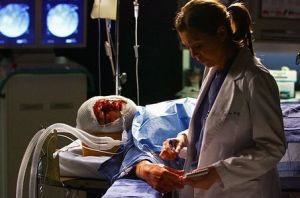
In many countries it is the medic’s that have the legal responsibility to make decisions ‘in the patient’s best interests’.
7. The Flat-Line Myth
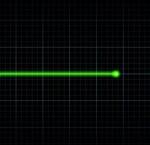
Never trust the completely flat line: In reality it never looks as flat as this. If it does, it means the machine is not connected!
Back in the ‘Emergency Room’, a patient has been wheeled in from a car accident. Their blood pressure is dropping, they’ve stopped breathing and the heart monitor shows a ‘flat line’. Everyone seems to be panicking! Someone grabs a defibrillator and shouts “Clear!”
The patient jerks and is shocked back to life! Phew!
Wrong, wrong, wrong!
Defibrillators do send an electric shock to the heart but, unlike in the dramatised TV version, they certainly don’t cause someone to jump out of bed in a complete body spasm!
Shocking the heart never works when a person is ‘flat-lining’ (a condition called ‘asystole’)! Shocking the heart only works in certain conditions - e.g. when the heart monitor will shows erratic trace:
6. The ‘Paranoid’ Schizophrenia Myth
Mental health issues carry a lot of bad stigma in today’s society. I get very cross when medical dramas don’t take the opportunity to dispel common myths and misconceptions. Schizophrenia is nearly always portrayed very badly: Characters either have a ‘split personality’ or are ‘blood-thirsty psychopaths’.
In reality, people with schizophrenia are rarely violent, and do not have a ‘split personality’.
‘Paranoid’ schizophrenia is the name given for the commonest type of schizophrenia but many psychiatrists don’t even use the term because of the negative and inaccurate connotations it has.
Unlike what you might have read in tabloid newspapers, people suffering from schizophrenia usually withdraw into themselves and are troubled by worrying delusions.
‘Split personality disorder’ is something altogether different and is steeped in controversy; many professionals don’t believe it even exists.
.
5. The Pulling Out the Blade Myth
Having just survived a terrorist explosion, ‘Jack’ lies wounded on the floor. Without feeling the pain, he realises that a sharp piece of metal has impaled in his side. Being a well-trained action-hero, he knows that the best thing to do is pull it out…
Don’t ever do it!!
It looks very manly and brave but it is probably the worst thing to do. Trying to pull out anything much bigger than a large splinter is likely to cause much more bleeding. Don’t try to be Rambo: Leave it in and let the professionals take it out!
.
4. The Defibrillator Rub Myth
Go on: give those defibrillator paddles a rub while it charges up!
But it’s not done! Rubbing paddles together looks cool but is completely pointless, and may even damage the equipment.
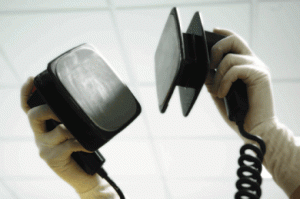
Go on: give them a rub together! The ONLY time rubbing defibrillator paddles together is useful is to spread conductive gel across them. Gel is rarely used nowadays, instead self-adhesive ‘gel pads’ are placed on the chest.
3. Made up Diseases!
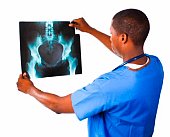
Take with a pinch of salt: Usually scan results on TV bear no resemblance to the condition doctors are talking about
Script writing for medical dramas must be great fun. To most of us, medicine is shrouded in exotic-sounding diseases and unintelligible jargon. Granted, people are now more informed about health and disease than ever before; but who really knows the difference between a medullary glioblastoma and a cavernous sinus thrombosis?
And would you know if ‘Uromysitisis Poisoning’ was real or not?
Even though all medical dramas have at least one doctor advising the script-writers, they are still be pretty liberal with the truth.
In an attempt to put the record straight, one doctor has dedicated a website to catalogue every single medical inaccuracy in the hit American TV show House MD!
(Uromysitisis is made-up, and featured in an episode of ‘Seinfeld’)
.
2. The Doctors Do Everything Myth
My favourite hospital drama at the moment is ‘House MD’, but it is happens to be one of the worst culprits for peddling this particular myth.
Not only do Doctors have IQs off the scale and can diagnose and treat any condition; but they are also experts in operating MRI scanners, analysing blood samples in the lab and performing complex surgery! These academic super-heroes must save the hospital a small fortune: Whatever happened to the radiologist, lab technician, nurse, pharmacist or specialist surgeon?
It might sound strange, but in reality doctors are actually humans…
.
.
1. Behind any Storage Room Door there’s a Couple of Doctors having a Romantic Moment
Are you lonely and in need of a relationship? Then become a medical intern!
‘Grey’s Anatomy’ did to hospital dramas what ‘Sex and the City’ did for sit-coms. Bringing the medical drama to new levels (or lows), the hospital has been transformed from a bad-smelling institution for the sick to a hip and modern Club 18-30!
What a relief to know that most medical professionals are far too busy with work for a ‘quickie’ in the sluice cupboard.
Either that or I always worked in the wrong hospitals…
.
Thanks for reading - comments and feedback are warmly welcomed!
BORED WITH SCIENCE WRITING? I was - but I’ve been lucky enough to part of a team that has launched a free, bi-monthly digital magazine which tries to deliver understandable science writing. It’s also about giving new or undiscovered writers a chance to write to a growing audience of readers. Why not check it out here! I think it’s rather cool…
References and Further Readings:
Treakle AM, Thom KA, Furuno JP, Strauss SM, Harris AD, & Perencevich EN (2009). Bacterial contamination of health care workers’ white coats. American journal of infection control, 37 (2), 101-5 PMID: 18834751
Hochberg, MS. The Doctor’s White Coat-an Historical Perspective American Medical Association Journal of Ethics April 2007, Volume 9, Number 4: 310-314
What is a superbug?
Get more information on Schizophrenia from NHS Choices and the excellent website Rethink
Read about real defibrillators here
Cardiopulmonary Resuscitation on Television — Miracles and Misinformation (New England Journal of Medicine)
A comprehensive list of made up diseases is on Wikipedia
Another article of medical inaccuracies in the Eagle Tribune
Why you should never do CPR like you see it on TV: An article by Free Radicals
Multiple Personality Disorder (aka ‘spit personality’) is discussed here
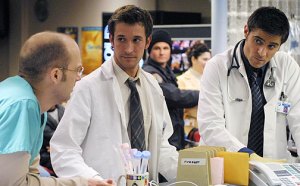

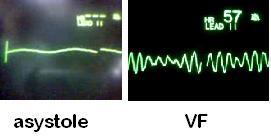
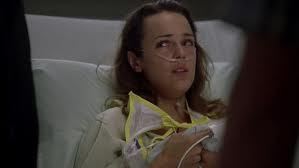


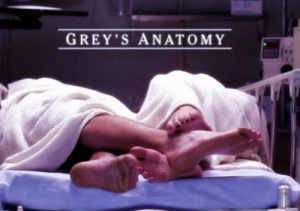

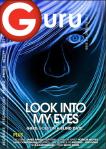
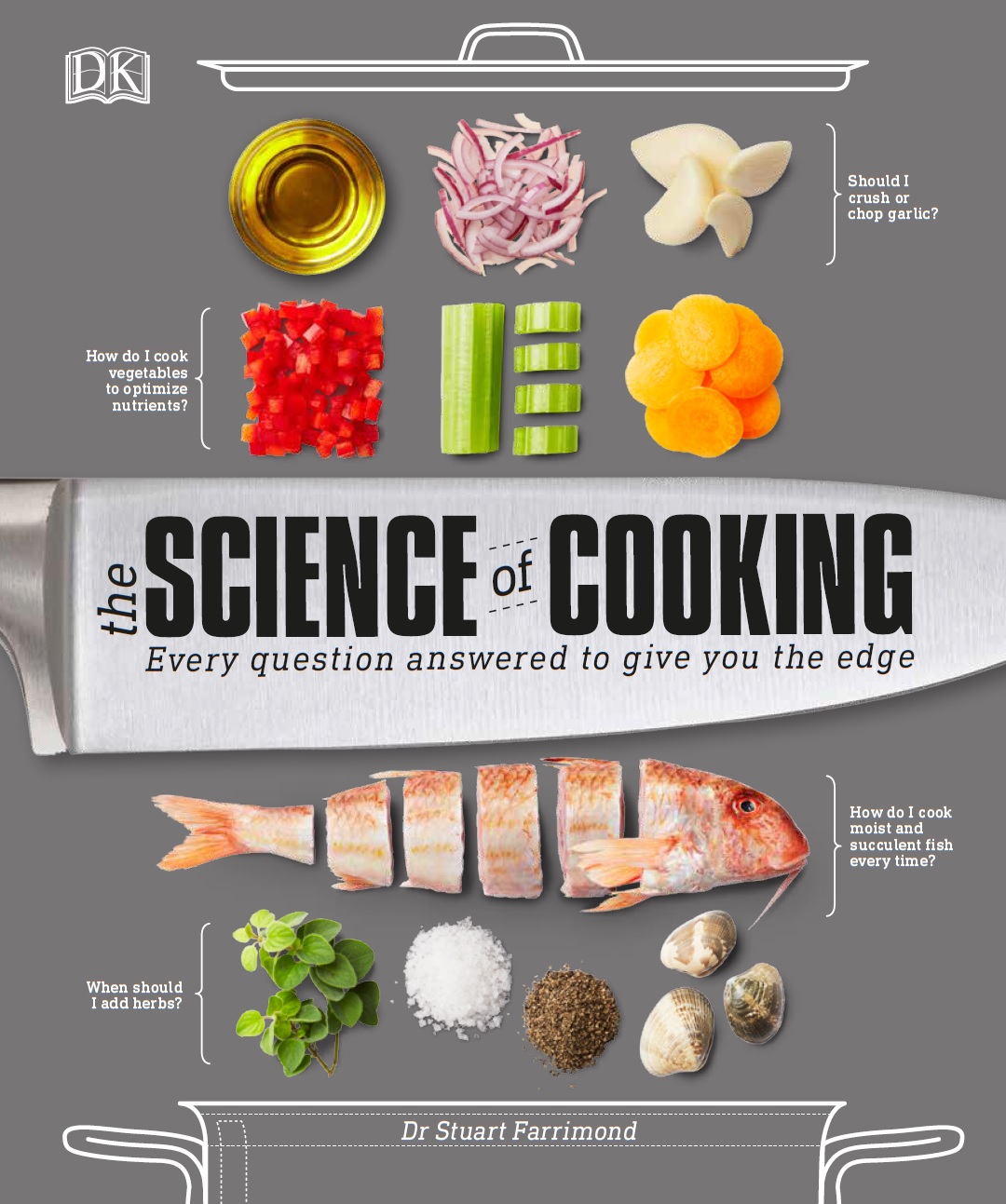



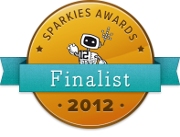




Great post stu! Keep them coming
Posted by Brandon | January 19, 2011, 8:01 pmThanks my friend 🙂
Posted by Stuart Farrimond | January 19, 2011, 8:04 pmtoo funny, I love the information. I’ve worked in the medical field for a little over 20 years and I was helping my daughter with a paper she had to do in college by watching a House episode and say what was real and what wasn’t. Very hard to do for a freshman in college with no medical background. I looked all over this dang internet trying to find proff that nobody rubs paddles together anymore and that they really don’t use gel anymore and that they use hands free or gel pads. Thanks for your help 🙂
Posted by Coachgsboo | April 3, 2011, 1:23 amHi there Coachgsboo, thanks for the comment!
When I was researching this post, I found the same thing! It almost got me thinking that perhaps things were done differently in the USA. It’s quite funny what TV producers can get away with…
Ah, being a freshman, I remember it well! I recall how difficult (read: impossible) it is to write those reports without clinical experience. I wish her luck!
Posted by Stuart Farrimond | April 4, 2011, 1:13 pmWhat about the inaccuracy of doctors’ ages? In the first season of House, they mention that Cameron is 25… and already a board-certified allergist. In reality, she’d probably be in her 3rd year of med school.
Posted by Bobbi | April 28, 2011, 9:53 pmHi Bobbi, thanks for commenting,
You are so right! I hadn’t thought of that one. You can officially have medical myth no. 11!
Posted by Stuart Farrimond | April 28, 2011, 11:21 pmHAHAHA… We also talk about this in our hospitals.. You are right sir.. Some of myths are really true. Its happen in hospitals and all the doctors talk about this..
Regards,
Cliff Merchant MD
Posted by cliffmarchant | September 13, 2011, 8:48 amWhat happened to medical professionals knowing the difference between lab technicians, medical technologists and medical technicians?
Posted by Ethan | May 20, 2012, 9:10 amIndeed. 🙂
Posted by Stuart Farrimond | May 20, 2012, 10:32 amBack in ’86.. in the early morning hours at UMC (Las Vegas) hospital I was in. Two medical professionals “Did It” in my room.
So “fooling around” at work.. Probably happens more in hospitals than one thinks.
Posted by Gene | August 18, 2012, 9:00 pmIn my experience as a nurse, this most often happened after a particularly difficult night, a code that dragged on too long for nothing, emotions are wrecked and we wound up at someone’s apartment where the beer flowed and the pot smouldered. A group hug becomes a group grope becomes a night we pretend never happened. Oh the memories this topic brings back.
Posted by j c lord | August 25, 2015, 2:00 amIt’s fairly easy to demonstrate that ALL television is nonsense. Wherever a viewer has any expertise at all, that viewer will invariably cite the preponderance of nonsense. Therefore, whether it be health, law, science, math, engineering, physics, medicine, religion, firearms and exposives as extra-special cases, or any other domain of human endeavor-I think one can be assured: TV portrayal is complete crap. It’s entertainment, and I doubt the majority of viewers appreciate how entertaining facts are.
Posted by K Fleming | November 6, 2014, 4:09 am11. If you are shot the most important thing is to get the bullet out!
Nope. It is often not necessary and may subject the patient to additional surgical risk. When I do remove a bullet it does make a satisfying sound when dropped into a bowl. That part is true.
Posted by James Boyd | April 25, 2015, 2:00 amI just watched BJ put together a defib on MASH and after thinking about the timing, 1952, and the overall good research done on that series, I just had to check here and yeah, I was a little disappointed in MASH for missing this one. Regarding doctors and sex; as an old man RN, it sounds like docs joined the wrong profession for this job benefit. Nurse on nurse “emotional support”, more after hours than on duty were probably more common than doctor on doctor. At least in the medical centers where I worked. What a delightful topic! Anyone up for a couple of beers at the end of the shift?
Posted by j c lord | August 25, 2015, 1:45 amEvery time I recertify for CPR/AED/First Aid, the instructor debunks the defibrillator myth. TV shows and movies get this wrong all the time, but are there any examples of when they get it right?
Posted by Dave A | August 27, 2016, 1:08 amCasualty and Holby City in the UK.
Posted by Dorian | October 2, 2016, 12:51 amCasualty and Holby City in the UK do it correctly.
Posted by Dorian | October 2, 2016, 5:51 amIt looks like Casualty doesn’t get any of these wrong, maybe just the next of kin one if children are included in it.
Posted by Dorian | October 2, 2016, 12:48 amMost of these are false. You admitted the lab coat thing is real. The flatland is a real thing, because when medically dead the heart is stopped. Don’t know about jumping but you should double check and dig. It takes months to years jumping from topic to topic before I found out Mythbusters were wrong about splitting wood arrows. I’be overhead of some doctors being known to be unfaitful, though I won’t comment on the where prescribed by a given scene. If they are inventing new diseases when they are new diseases discovered, you probably should stop criticising realism of discovery. The myth of medicallying reviving someone is stupid. It is real, it happens. What rate are you quoting? Every nine months in between episodes of a show they may bring someone back. People are revived multiple times in real life. Don’t criticise bullet wounds, if you are binding yourself to the false realism and laws of statistics and odds. Variation occurs more in real life. Really you are going to go overseas about the real life next of kin thing? Well, since these shows get set in America you probably need to revaluate your criteria for judging the reality of these stories set in America.
I am a fictional writer who defends against disbelief where undeserved. The flat line myth is a real one, because real medicine does still try to defib the dead guy and you are spreading a misconception along with others because there is a lot of negativity and disbelief from stories that do make continuity mistakesin their given reality, are just bad in quality, art, and interest, or from remembering these incidents no matter what. There is my run on. I encourage to be careful and reopen your mind and examination of things.
Posted by Anonymous | November 18, 2016, 7:48 amCorrecting if my original comments about how fake this list is even posted the first time. About how most of these myths are true, from the white coats which are white, the rights of the next of kin in American shows, rumors of the unfaithfulness of doctors at times, rejecting names of new diseases when they are new diseases discovered in the story, among others. Although I have yet to find that defibrillator is done on flat lined parients, but before that medically dead or without heartbeat some in fibrillation can be defibbed. Until I find otherwise, I will leave that statement alone. Although it does breed misconceptions on the fact a heart can be restarted without a beat, just as much as the monitor of a flat line leads us to believe it is just a heartbeat and not electrical signals in the heart.
Also, don’t say schizophrenia is not a case for killers when there are some who are and the show gives one case, per show, per universe and story-world history. And then when you describe the mental problem…that doesn’t sound dangerous! And psychologists are about as stupid as Freud who they still seem to like. And mentioning a difference between experts doesn’t prove something not to exist. Quote the evidence.
Posted by Anonymous | November 18, 2016, 8:51 amAn extra link is included in the extra reading section. An study (one of a few) that compares resuscitation rates in real life vs TV is included - they conclude “The survival rates in our study are significantly higher than the most optimistic survival rates in the medical literature, and the portrayal of CPR on television may lead the viewing public to have an unrealistic impression of CPR and its chances for success”.
Since 2007, the UK Department of Health banned the wearing of white coats in doctors (example guidance here).
Posted by Stuart Farrimond | November 18, 2016, 10:41 amSome of this is US vs UK distinctions (white coats, next of kin) and you seem to be confusing the idea that these shows present things that never happen with what the writer actually said, simply that they don’t occur as frequently as they’re depicted (violent schizophrenics, resuscitation survival, whoopee in the supply room). As for flat-lines, US shows do almost always show a flat-line on the monitor before they shock a patient. However, they do often say v-tac or a-fib before shocking them. It’s the monitors that are wrong, and they do almost always rub the paddles together. The UK shows Casualty and Holby City don’t do this, however. Just for fun, I’m going to keep track of resuscitations and survival rates as I watch Casualty, like the study of US shows that Dr Stu linked to did.
Posted by Dorian | November 18, 2016, 6:54 pmBy the way, I meant v-fib not a-fib.
Posted by Dorian | November 19, 2016, 6:26 amThis is news to me. Don’t watch the shows, so details like this are noteworthy. In movies with “unlimited ammo”, even though this leads many gun owners to call Hollywood a bunch of idiot liberals who don’t know guns, the reality is that many movies with unlimited ammo during the actual shooting show many signs they also are aware of limited ammo in scenes where they aren’t fighting, like Die Hard when he checks a pistol for ammo, intentionally leaves a weapon unloaded, terrorists bring extra ammo and stack it, and in Rambo II he runs out of ammo in one dramatic scene at the end. It is noteworthy that the correct fib lingo is used, however bad of them to still use wrong monitors. Careful, however, as I believe asystole and fib looks similar on some levels, so near flatline is confusing on some of the monitors even in movies. Also, it used to be you shocked a flatline, and so Hollywood just hasn’t always adapted in time.
Posted by Anonymous Storyteller | February 2, 2018, 9:38 pm